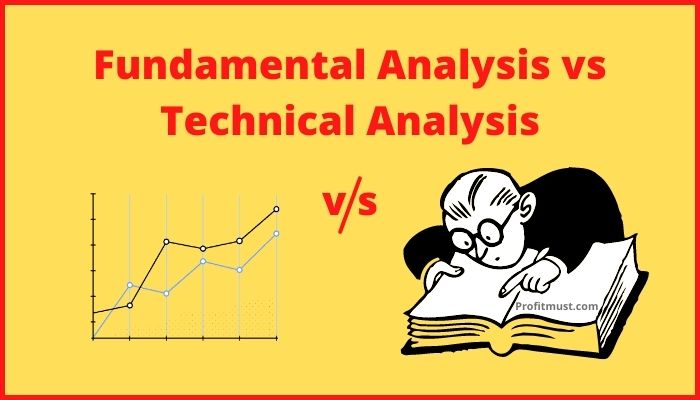Analysts use a variety of methodologies to assess a firm’s financial soundness in order to determine its stock market valuation. One of them is financial statement analysis.
Financial statements are, at their core, a health report card that helps investors forecast a company’s long-term performance.
We will discuss Techniques of Financial Statement Analysis, However, let’s discuss types of financial statements before that.
Table of Contents
Types of Financial Statements
Every business must keep track of three key financial statements: the balance sheet, income statement, and cash flow statement. Let’s take a look at each one individually.
-
Balance sheet
It’s a report card that shows the value of a firm in terms of book value at the end of a given year. It is divided into three sections: assets, liabilities (debt), and shareholder’s equity.
Subtracting debt from assets is the most straightforward technique for calculating book value or shareholder’s equity.
The book value is an essential performance statistic that rises or falls in response to the company’s increasing or decreased financial operations.
-
Cash flow statement
It’s a tally of how much liquid cash or cash equivalent the firm has on hand. It’s a report card that demonstrates how successfully a business controls its cash flow.
The cash flow statement, which complements the balance sheet and income statement, is an essential document for evaluating a company’s financial performance.
-
Income Statement
It provides a detailed account of the revenue earned by the company. The profit and loss statement, often known as the profit & loss statement, gives the bottom line for making decisions about whether the company is profitable or not.
Now let’s discuss the meaning of Financial Statement Analysis & Techniques of Financial Statement Analysis.

What is Financial Statement Analysis?
The technique of evaluating a firm ‘s performance or value using its balance sheet, income statement, or statement of cash flows is known as financial statement analysis.
Investors can construct a more complex view of a firm ‘s financial profile by employing a variety of methodologies including horizontal, vertical, or ratio analysis.
Example of Financial Statement Analysis Techniques
To determine how effectively a firm creates profits and shareholder value, an analyst may examine a number of ratios on its income statement.
The difference between revenues and the cost of products sold, for example, is shown by gross profit margin. If a firm’s gross profit margin is higher than its competitors, it may be a good indicator.
Using a horizontal examination of the company’s operating trends, the analyst may notice that the gross profit margin has been improving for the past nine fiscal periods.
Techniques of Financial Statement Analysis
Analysts employ a variety of methodologies to gain a thorough grasp of a company’s financial performance throughout time in stock market. Horizontal analysis, vertical analysis, ratio, Cost Volume Profit Analysis and trend analysis are the five most often used techniques of financial statement analysis.

-
Horizontal Analysis
First in our list of techniques of financial statement analysis is Horizontal analysis. To understand a company’s progress over time, the performance of two or more periods are compared. To get an overall sense of trends, each component of a ledger is compared to the prior period.
For example, if the cost of final items increases 20% in a year but is not represented in sales, there may be some components that are costing the organisation more.
-
Vertical Analysis
Next in our list of techniques of financial statement analysis is Vertical Analysis. Vertical analysis is used to establish a link between distinct ledger line items. It provides analysts with an overview of total revenue and spending performance. The data is analysed as a ratio.
-
Ratio Analysis
Financial analysis ratio approaches are used to compare one financial component to another and display an overall rising or decreasing trend. After calculating the ratio, it can be compared to the preceding period to see if the company’s performance is meeting expectations. It assists management in identifying any deviations from established expectations and taking corrective action.
-
Trend Analysis
It aids in the analysis of trends across three or more time periods. It considers incremental change patterns, with the first year serving as the baseline. A positive or negative trend will be revealed by a modification in a financial statement.
-
Cost Volume Profit Analysis
Last in our list of techniques of financial statement analysis is Cost Volume Profit Analysis. The current link between sales, cost, and profit is revealed in this analysis. The expense is split into two halves. There are two types of costs: fixed and variable. Sales and variable costs have a consistent relationship. Cost analysis allows managers to better plan profits.

Conclusion
These techniques of financial statement analysis will help you to analyze the company financially but don’t depend only on the financials. Also do other research before buying any stock.
This is all about techniques of financial statement analysis from our side. Let us know your views about list any two techniques of financial statement analysis in the comment section.
Other Interesting blogs related to techniques of financial statement analysis:
Best technical analysis app for Indian stock market
Books on Technical Analysis of Indian Stock Market
Best Books For Stock Market Beginners in India
Frequently Asked Questions About Techniques of Financial Analysis

What are the 5 methods of financial statement analysis?
These are the 5 methods of financial statement analysis Horizontal Analysis, Vertical Analysis, Ratio Analysis, Trend Analysis, and Cost Volume Profit Analysis.
What is financial analysis technique?
Financial analysis is the process of determining the performance and appropriateness of companies, initiatives, financial plans, and other account-related transactions. Financial analysis is frequently used to determine whether or not an element is stable, fluid, or productive enough to justify a financial investment.
What are the different tools for financial statement analysis?
Financial analysis tools are various ways or methods of evaluating and interpreting a firm 's financial statements for various purposes such as planning, investment, and performance, with common size statements (vertical analysis), relative financial statements (comparison of financial statements), ratio analysis (quantitative analysis), cash flow analysis, and trend analysis being some of the most commonly used financial tools relying on their usage and requirements.
What are the limitation of analysis of financial statement?
Changes in cost price levels are not considered in the financial analysis. Without prior awareness of the changes in accounting procedures used by a company, the financial analysis may be confusing.
What are the objectives of analysis of financial statement?
The main goal of any firm's analysis financial statement is to provide the necessary information to the readers of the financial statement for making informed decisions, assessing the company's present and previous performance, predicting the success or failure of the business, and so on.

